How Americans for years propped up militant groups for ‘regime change’ in Syria
By Alireza Akbari
A cluster of militant groups backed by Western and regional states announced the end of Syrian President Bashar al-Assad’s 24-year reign in a televised address on December 8.
It marked the end of dramatic developments in the Arab country that began less than two weeks ago and immediately after a ceasefire deal between the Israeli regime and Lebanon was announced.
It was on November 27 when a video surfaced showing some militant groups voicing their intention to overthrow Assad’s government, taking advantage of developments in Lebanon as well as Gaza.
They started in Aleppo, the largest city in Syria, where they had to deal with a semblance of resistance.
Soon after, these groups with different affiliations launched a series of assaults on Syrian military positions, capturing bases in Idlib and Hama as they advanced toward the capital, Damascus.
In a statement on Saturday, a day before the announcement of al-Assad's fall, US President-elect Donald Trump said Washington "should have nothing to do" with the developments in Syria.
"This is not our fight. Let it play out. Do not get involved," he wrote on his Truth Social platform.
Many analysts interpreted Trump's words as a free hand to anti-Assad militant groups to overthrow his government and take control of the capital Damascus and state institutions there.
This is not the first time the US engineered a "regime change" plot in Syria. On previous occasions, the attempts failed despite Washington and its allies employing terrorists and mercenaries to oust Assad.
Jeffrey Sachs, a noted American public policy analyst, noted that Washington's "addiction to regime change" is deeply ingrained in its foreign policy and added that this approach has long revolved around the strategy of "overthrowing governments it doesn’t like."
“In 1979, we thought we would do something clever. Send in the CIA, start hiring some Jihadist mercenaries… which 40 years later has left Afghanistan completely destroyed," he said in an interview.
Sachs described the CIA's covert operations to oust al-Assad as a “disaster,” leading to the emergence of the Daesh terrorist group, and highlighted the staggering toll of the so-called Syrian Civil War, noting that 600,000 people died and over 10 million were displaced as a result of the engineered war.
“We must understand how this happened,” he said. “This happened because of us. These 600,000 are not just incidental. We started a war to overthrow a regime. It was covert.”
He emphasized that the US continues to support militant groups aiming to dismantle a democratically-elected government, "contrary to international law, the UN Charter, and common sense."
President Joe Biden, in remarks on Sunday, termed the fall of the Syrian government under Assad as a “fundamental act of justice” as well as “a moment of risk and uncertainty”
He went on to credit the US and its allies for "weakening" Syria and its allies including Russia, Iran and Hezbollah, making it clear that the so-called "popular uprising" in Syria was remotely controlled.
Documents prove that the US unsuccessfully tried for years to topple the Assad government primarily because they saw him as a roadblock in their efforts to target the Axis of Resistance.
Leaked documents from former US Secretary of State Hillary Clinton's State Department reveal US intentions to protect its ally - the regime in Tel Aviv - by toppling Assad’s government.
“The best way to help Israel deal with Iran’s growing nuclear capability is to help the people of Syria overthrow the regime of Bashar Assad," read one of the leaked cables.
"The strategic relationship between Iran and the regime of Assad in Syria makes it possible for Iran to undermine Israel’s security. The end of the Assad regime would end this dangerous alliance.”
In a mail to Clinton, then-senior State Department official Jake Sullivan said al-Qaeda was "on our side in Syria," laying bare information that was not known to many before that.

“Bringing down Assad would not only be a massive boom to Israel’s security, it would also ease Israel’s understandable fear of losing its nuclear monopoly…In short, the White House can ease the tensions that have developed with Israel over Iran by doing the right thing in Syria.”
According to the email, the US also considered the use of “threat” or “force” to force the Syrian president to step down, describing the overthrow of Assad’s government as a “success” that would significantly reshape the geopolitical landscape of West Asia.
Moreover, the leaked correspondence also outlined a roadmap for US action, recommending that Washington express its willingness to work with “regional allies like Turkey, Saudi Arabia, and Qatar to organize, train and arm Syrian rebel forces.”
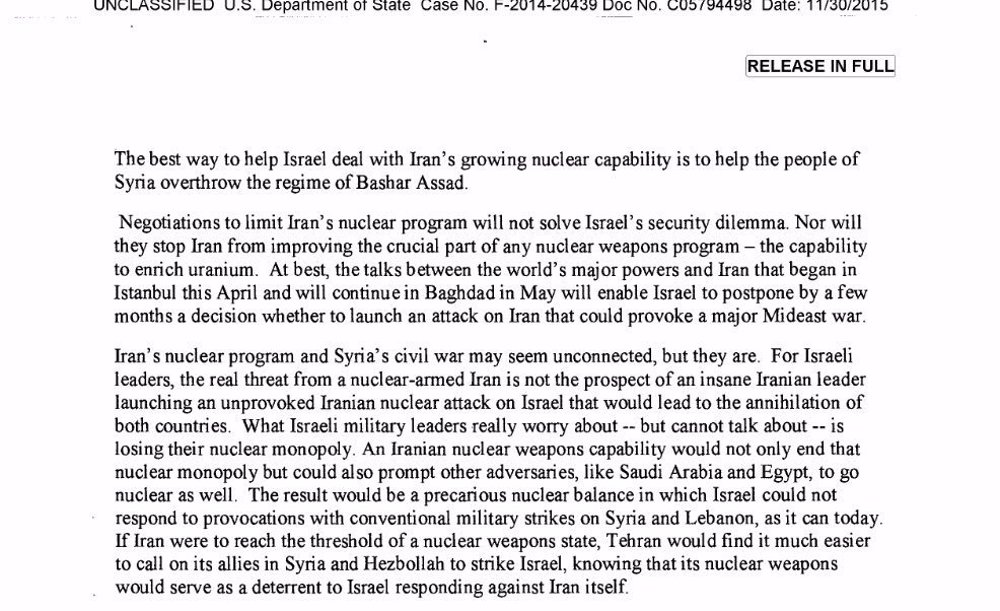
In 2019, ex-US Deputy Assistant Secretary of Defense for the Middle East Dana Stroul asserted that the US “owns” the most hydrocarbon and grain-rich one-third of Syria, indicating that Washington would leverage this control to pursue its "regime change" plot more aggressively.
According to analysts, this statement by Stroul highlighted the US intention to prioritize its interests and that of its strategic allies in the effort to overthrow Assad's government.
It's important to note that efforts toward regime change in Syria date back decades, to 1956. At that time, former US Secretary of State John Foster Dulles and President Dwight David Eisenhower had expressed concerns over Syria’s independence and began discussions on potential covert actions.
These discussions laid the groundwork not only for Syria but for a broader strategy throughout West Asia where the proposed Operation Straggle aimed to instigate a military coup through a series of violent activities along Syria's borders, orchestrated by external actors, including the British Secret Service, and the CIA.
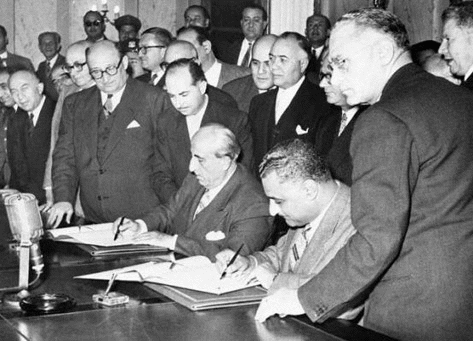
In 1956 and 1957, the CIA and British Secret Intelligence Service (MI6) devised several covert plans to overthrow the Syrian government due to its refusal to cooperate with “Western anti-communism.”
This covert operation remained largely hidden until the discovery of a “Working Group Report” in 2003 among the papers of the late Tory British Defence Minister Duncan Sandys, shedding light on the conspiracy nearly half a century later.
Western powers believed that if a developing country pursued economic self-determination and achieved success, it could inspire similar movements elsewhere. The concern was that if one nation improved the lives of its citizens, others with greater resources might ask, “Why not us?”
Leaked CIA documents from 2008 further revealed that a September 1983 report titled “Bringing Real Muscle to Bear Against Syria” suggested that the US should consider significantly escalating its pressure on Assad in Syria.
The report recommended covertly orchestrating simultaneous military threats against Syria from three neighboring states hostile to Damascus.

According to the US Embassy, al-Assad's development programs disproportionately benefited rural areas at the cost of urban areas, where the Sunni population is predominant.
The nationalization initiatives and the establishment of large industries, the report claimed, diminished the wealth of Sunni entrepreneurs and business groups.
This economic disparity, combined with socialist reforms and an Islamic revival, fueled armed uprisings by the Muslim Brotherhood and other Sunni factions in the mid-1970s.
In 2001, retired United States Army officer Wesley Clark disclosed a US plan to remove "seven countries," with Syria being one of the countries on the target list.
It was also stated by CNN's Christiane Amanpour during an interview with Assad, stating that Western governments were actively plotting "a regime change in Syria."
According to a report by Washington Post staff writer Craig Whitlock, the State Department "secretly financed Syrian militant groups and related projects, including a satellite TV channel that broadcast anti-government programming," as revealed by previously undisclosed diplomatic cables.
The London-based satellite channel, Barada TV, began broadcasting in April 2009 and has since intensified its operations to cover the mass protests in Syria, aligning with a long-standing campaign to overthrow Assad's government.
The channel has close ties to the Movement for Justice and Development, and US diplomatic cables indicate that the State Department funded the group with as much as "$6 million since 2006."
The CIA's involvement in Syria's issue has been evident in its funding and training of anti-government militant groups with reports indicating that the agency has spent approximately $100,000 per "moderate rebel," amounting to nearly $1 billion annually for training efforts.
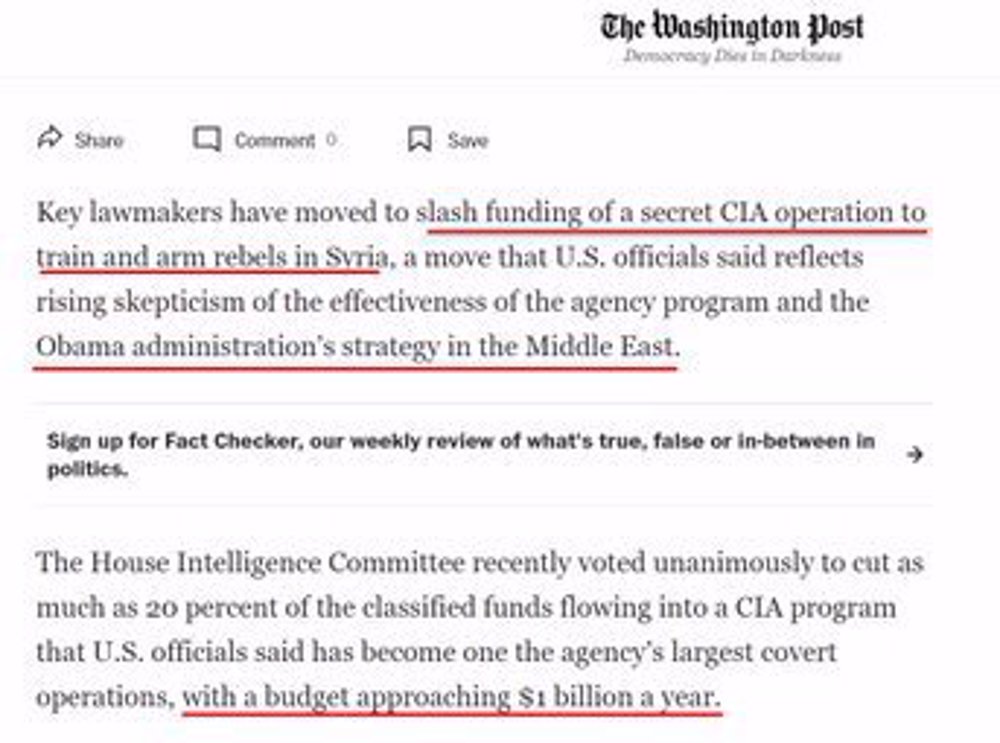
Additionally, the US has provided intelligence and support for the shipment of secondhand light and heavy weapons, such as rifles and grenades, into Syria.
These shipments have reached militants, raising concerns about the flow of arms in the region. This assessment of arms flows came at a critical juncture for former US President Barack Obama.
Between 2012 and 2013, al-Qaeda elements began to establish a presence in Syria, with leader Ayman al-Zawahiri dispatching senior operatives to strengthen the Nusra Front in 2013.
Considering the correspondence between Sullivan and Clinton in 2012, al-Qaeda was fighting against the Assad government on behalf of the United States and its spy agencies.
Abu Mohammed Al-Jolani, the leader of Hayaat Tahrir al-Sham militant group that overran Damascus, was formerly a senior al-Qaeda leader and a close aide to Zawahiri.
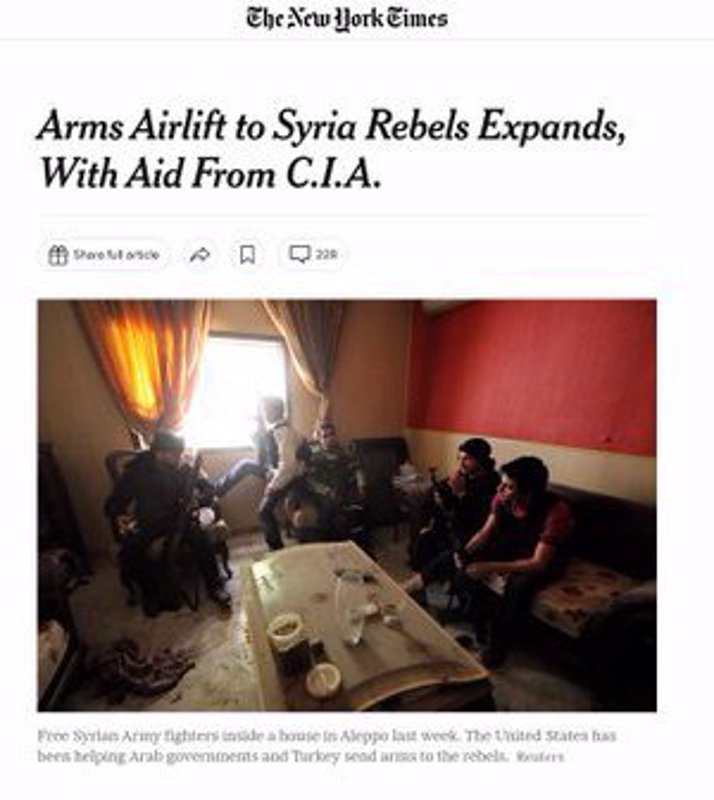
Syria entered a critical phase in 2015 as conditions grew increasingly complex. By this time, the so-called Syrian Civil War had fragmented the country into multiple zones controlled by the Syrian government, Turkey-backed groups, US-backed groups, Kurdish groups, and Daesh (ISIS).
These groups played a pivotal role in shaping the trajectory of the war. Among these, Al-Qaeda’s affiliate, Jabhat al-Nusra (later rebranded as Jabhat Fatah al-Sham), and Daesh dominated headlines for years with their territorial gains and brutal tactics.
Jabhat al-Nusra emerged as a formidable force in northwestern Syria, aligning with other groups under coalitions like the Army of Conquest (Jaish al-Fatah). This alliance seized key areas, including Idlib, challenging the Assad government and consolidating extremist influence in these territories.
On the other hand, the Daesh terrorist group also intensified its brutal campaign, holding swathes of territory in eastern Syria, including its de facto capital, Raqqa.
Iran and Russia supported Assad militarily, targeting both Daesh terrorists and militant groups and bolstering Assad’s position on the battlefield. Lebanese resistance movement Hezbollah also played a key role in the fight against these West-backed terrorists.
The US strategy to undermine and overthrow the Assad government persisted in different forms and shapes in the years that followed.
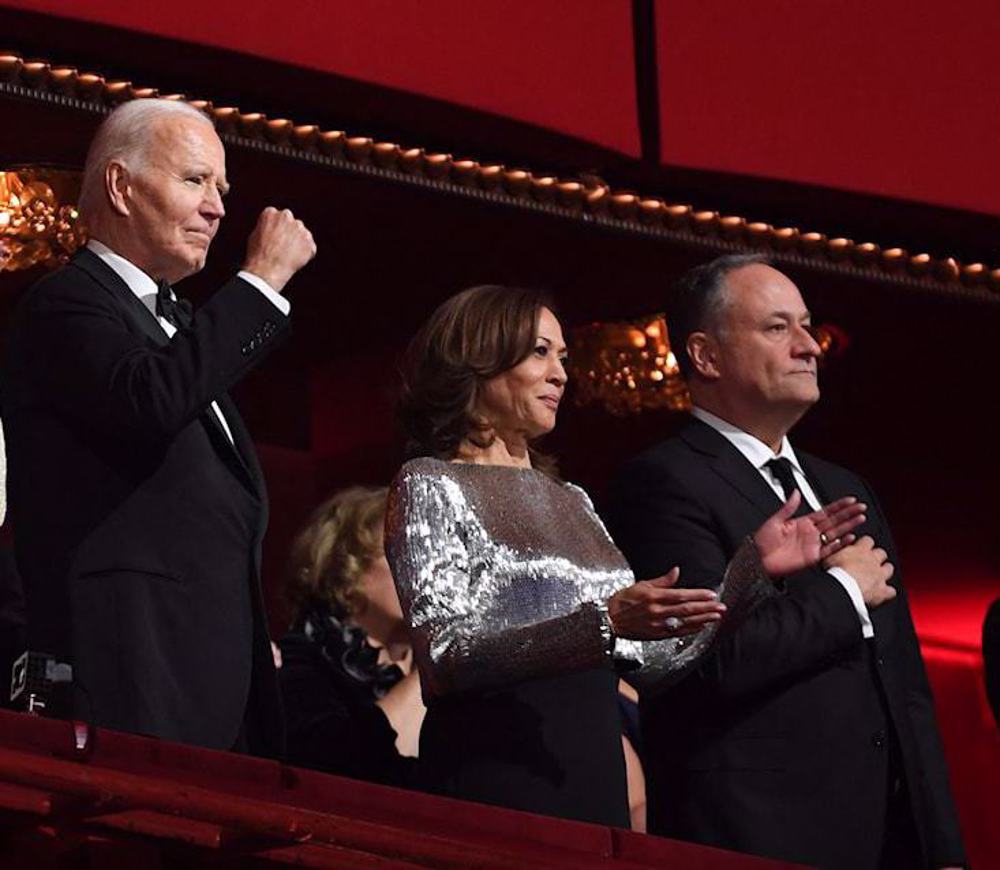
Washington was engaged in indirect communication with militants in Syria, who have now taken control of Damascus, according to officials who spoke with some American news outlets.
Initial messages from the US to these groups focused on outlining "what not to do."
Leading these armed forces was Hayat Tahrir al-Sham, which has been designated as a terrorist organization by both the US and the United Nations. The US has also labeled HTS leader Abu Mohammad al-Jolani a terrorist and has placed a $10 million bounty on his head.
US media reported that US intelligence agencies and senior officials in the Biden administration were actively assessing HTS and al-Jolani.
"A charm offensive might suggest that people are turning over a new leaf and thinking differently than they used to, so you should hear them out," according to one official, referring to al-Jolani's approach.
ICC rejects Israel's appeal to invalidate Netanyahu's arrest warrant
Imam Reza (AS) holy shrine begins accepting crypto donations
VIDEO | Newborn deaths surge in Gaza amid siege and maternal malnutrition
VIDEO | Pakistan, China conclude joint counterterrorism drills
Palestinian authorities slam ‘dangerous’ Israeli plan for 9,000 West Bank settler homes
‘Israeli actions, not Iran, fuel anti-Semitism’: Netizens react to Jewish holiday attack in Sydney
Iran opposes Trump's corridor plan for Caucasus: Leader’s aide
VIDEO | Press TV's news headlines



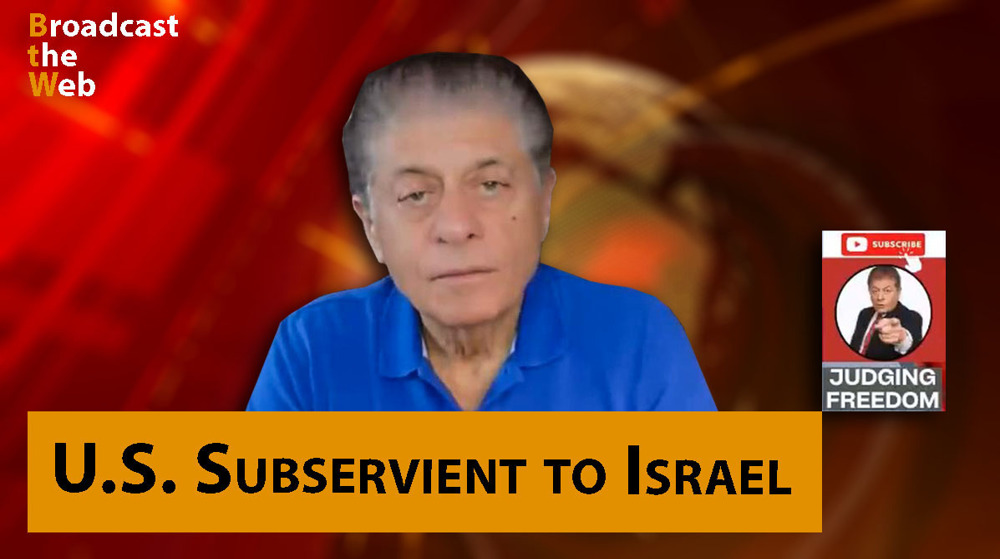
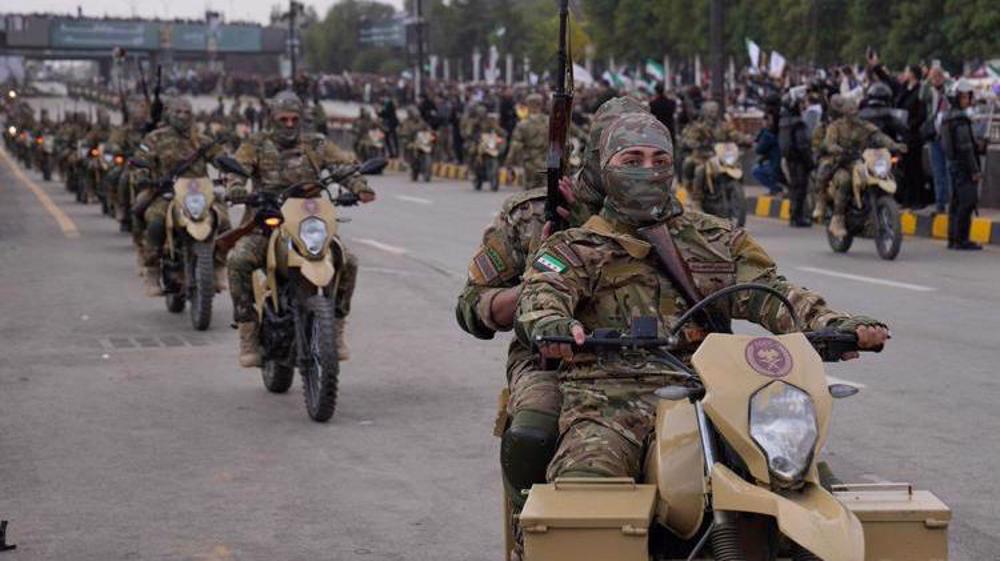





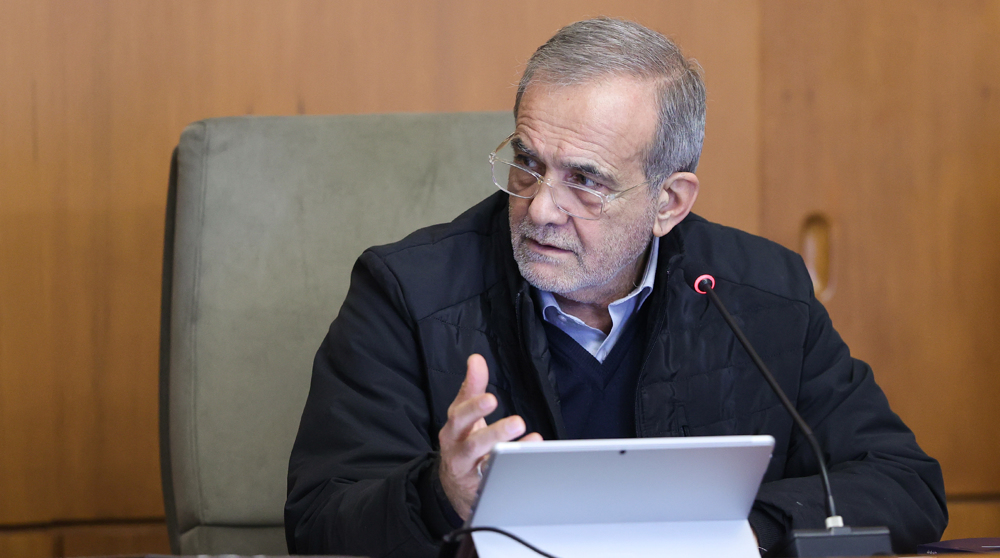


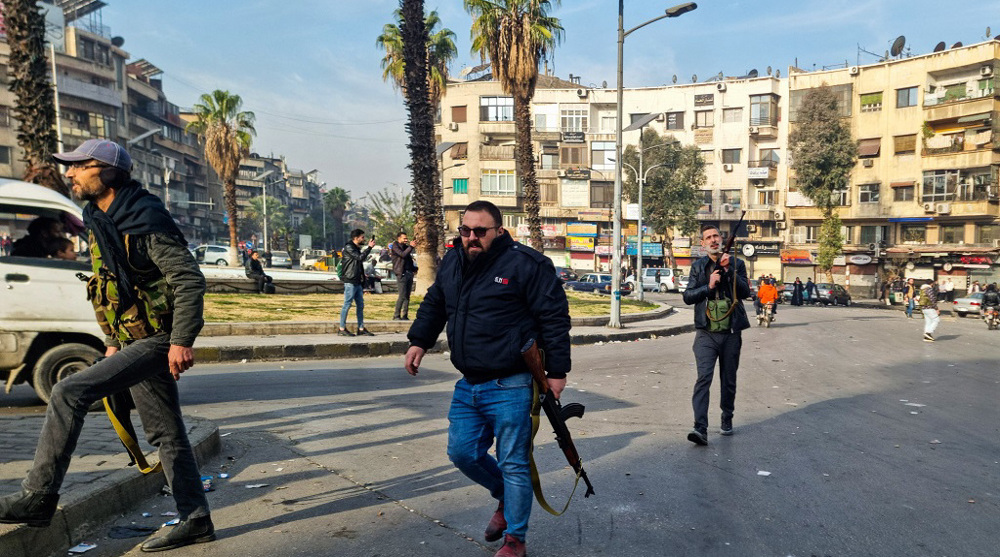
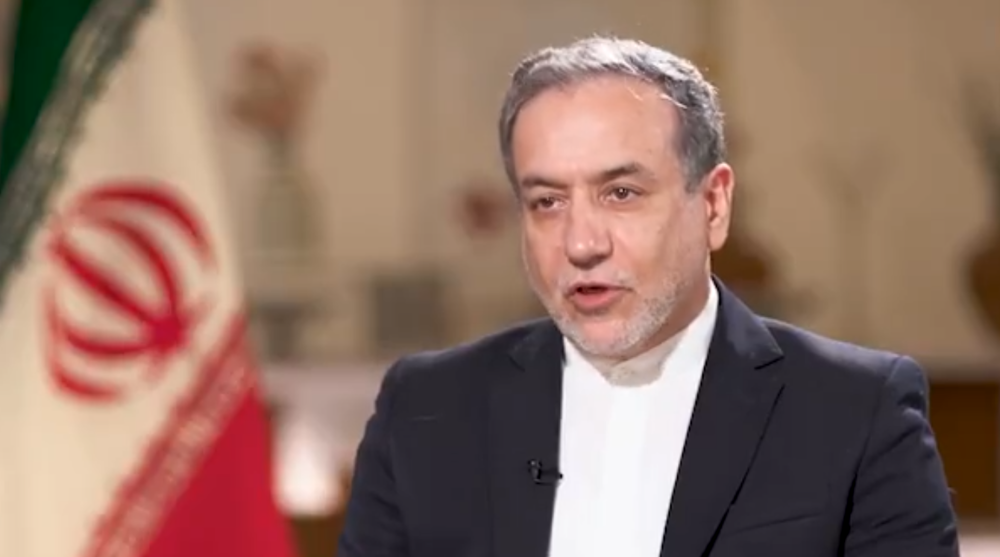

 This makes it easy to access the Press TV website
This makes it easy to access the Press TV website